COP is a climate conference that aims to cut emissions but paradoxically boost carbon footprints due to increased transport and attendance. This situation offers host cities a chance to engage in greenwashing, presenting a façade of environmental responsibility. This underscores the intricate challenges involved in realizing true sustainability during major events, highlighting the need for more authentic and effective climate strategies.
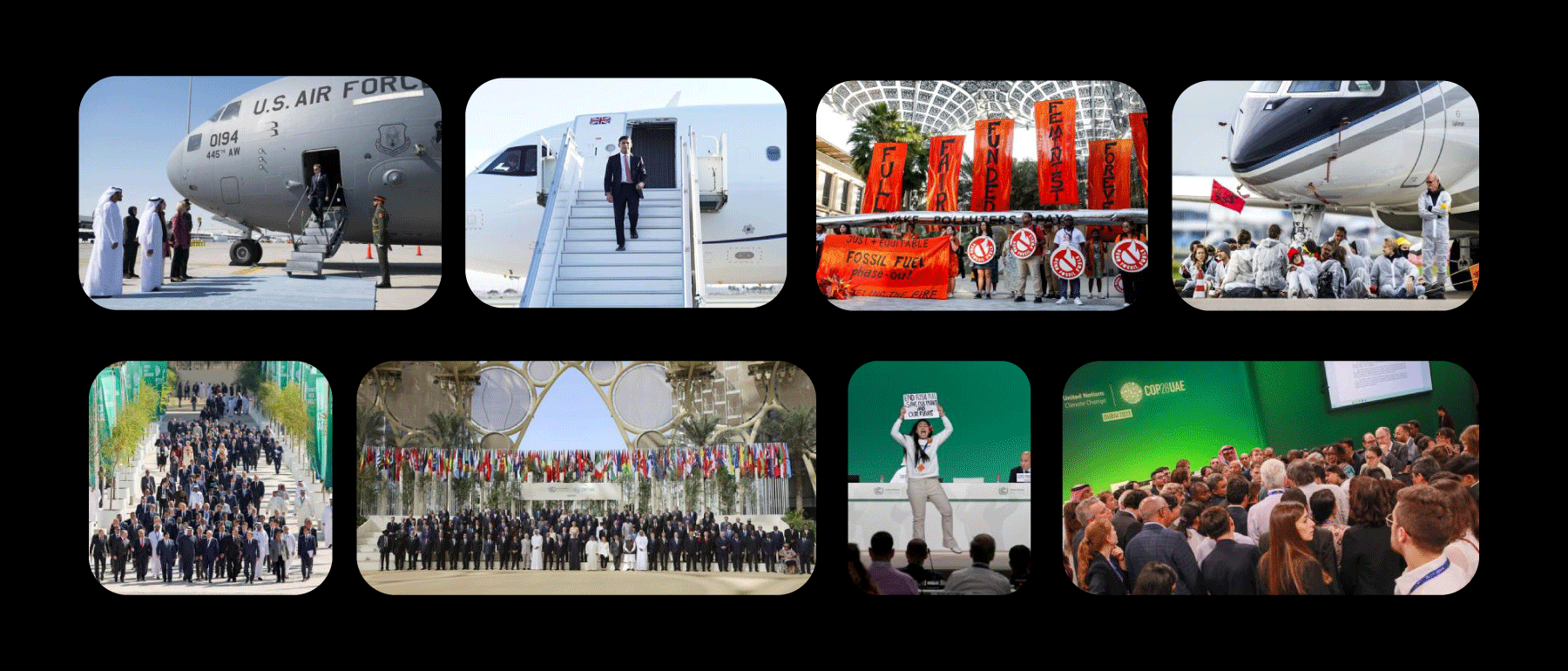
Methodology
Our methodology consists of an open source investigation that will allow us to research, compile, and bring awareness to the scale of the problem at hand. This will give the opportunity for the information that we are exposing to be viewed and used by anyone that needs to.

01. COP Context
The Conference of the Parties (COP), established under the UNFCCC in 1995, serves as the supreme decision-making body for international climate change discussions. . With each year, COP sees a significant rise in attendance, underscoring a problematic aspect of these critical global gatherings. This escalating participation, while indicative of rising global engagement, casts a shadow on the event’s environmental impact, spotlighting the challenge of balancing the necessity for widespread climate action dialogue with the imperative to minimize the ecological footprint of such large-scale conferences.
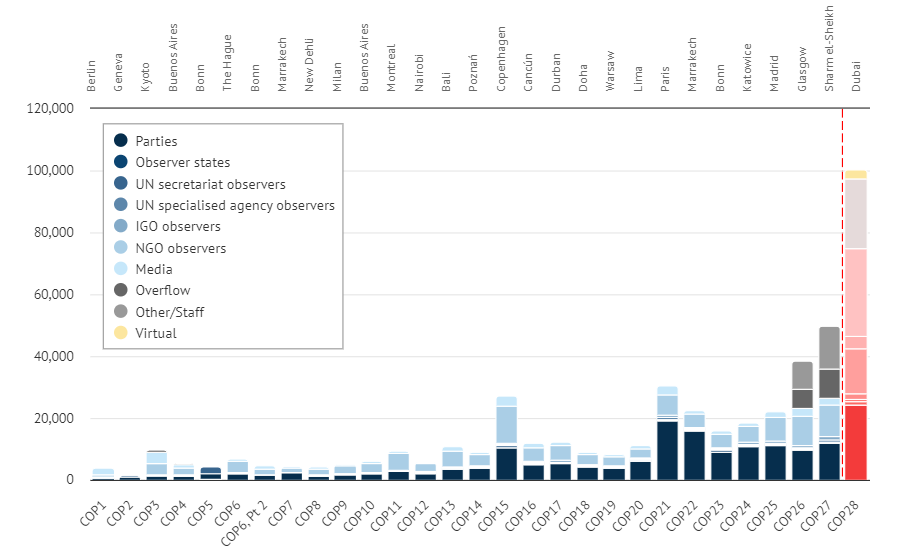
Source: UNFCCC and Carbon Brief analysis.
02. Data Gathering
The United Nations have published the official attendance list for COP28 in Dubai as an structured spreadsheet. Nevertheless, this was not the case for previous editions of COP, as the lists were published in PDF files. Therefore, the first task for assessing the historical attendance to COPs consists on developing a text-extraction algorithm to convert these files into tabular data, classifying each attendee as part of official parties or non governmental entities. For the first group, each person is labeled by country.
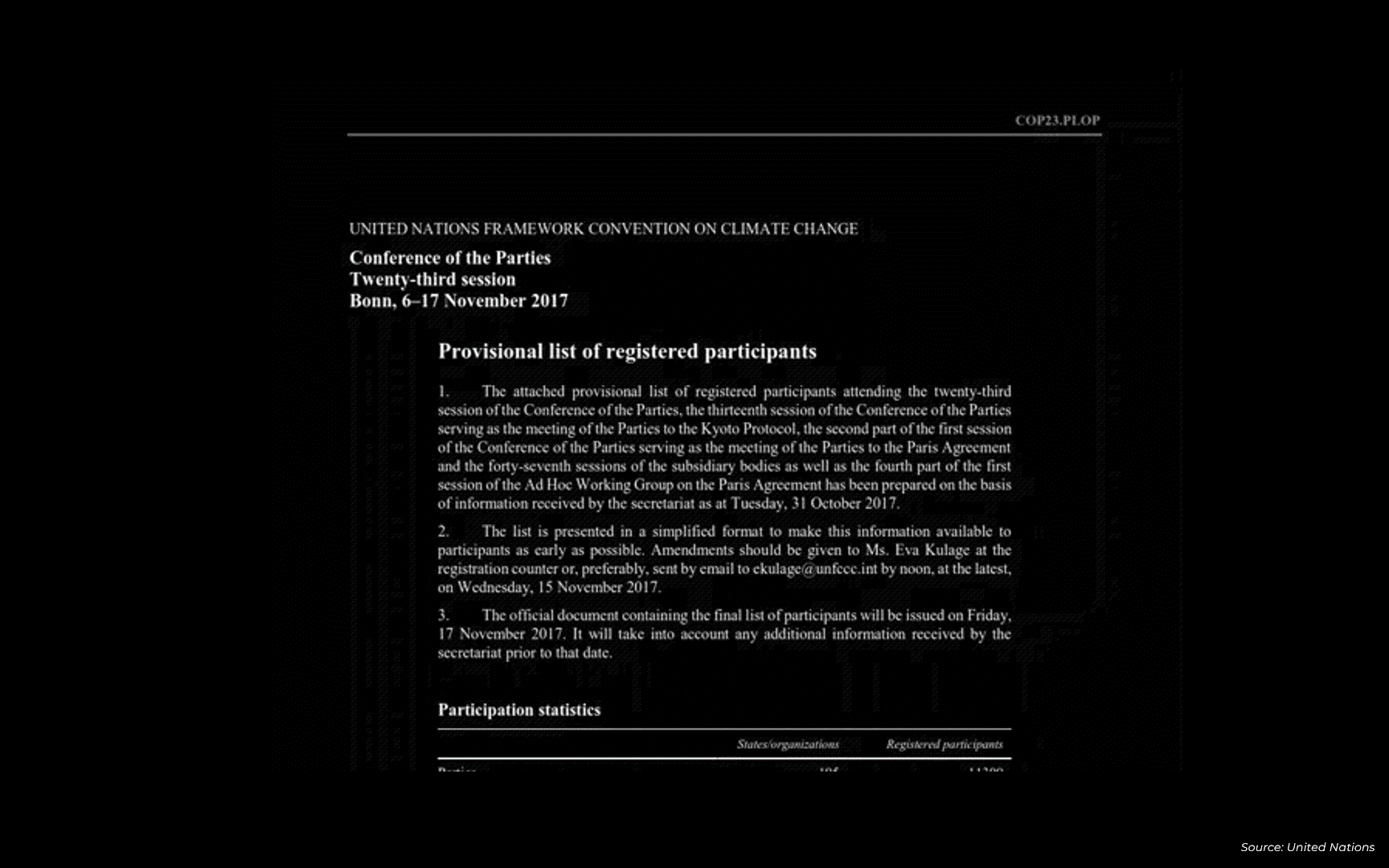
03. Data Manipulating
The aggregate attendance by country per each COP event was linked to an approximated flight route path, for this, the OpenFlights routes and airports were utilized to perform a network analysis that allows to estimate the possible route for each guest country, as well as estimating the distance traveled. By using the mean CO2 emission factor of a private jet, as well as the mean occupancy based on COP27 private jets count, it is possible to calculate the generated CO2 emissions per each guest country for all COP events since COP23. This methodology allows to identify the most critical stakeholders through a multicriteria prioritization based on the country’s population growth, yearly emissions, historical attendance and distance requiered to travel to each COP.
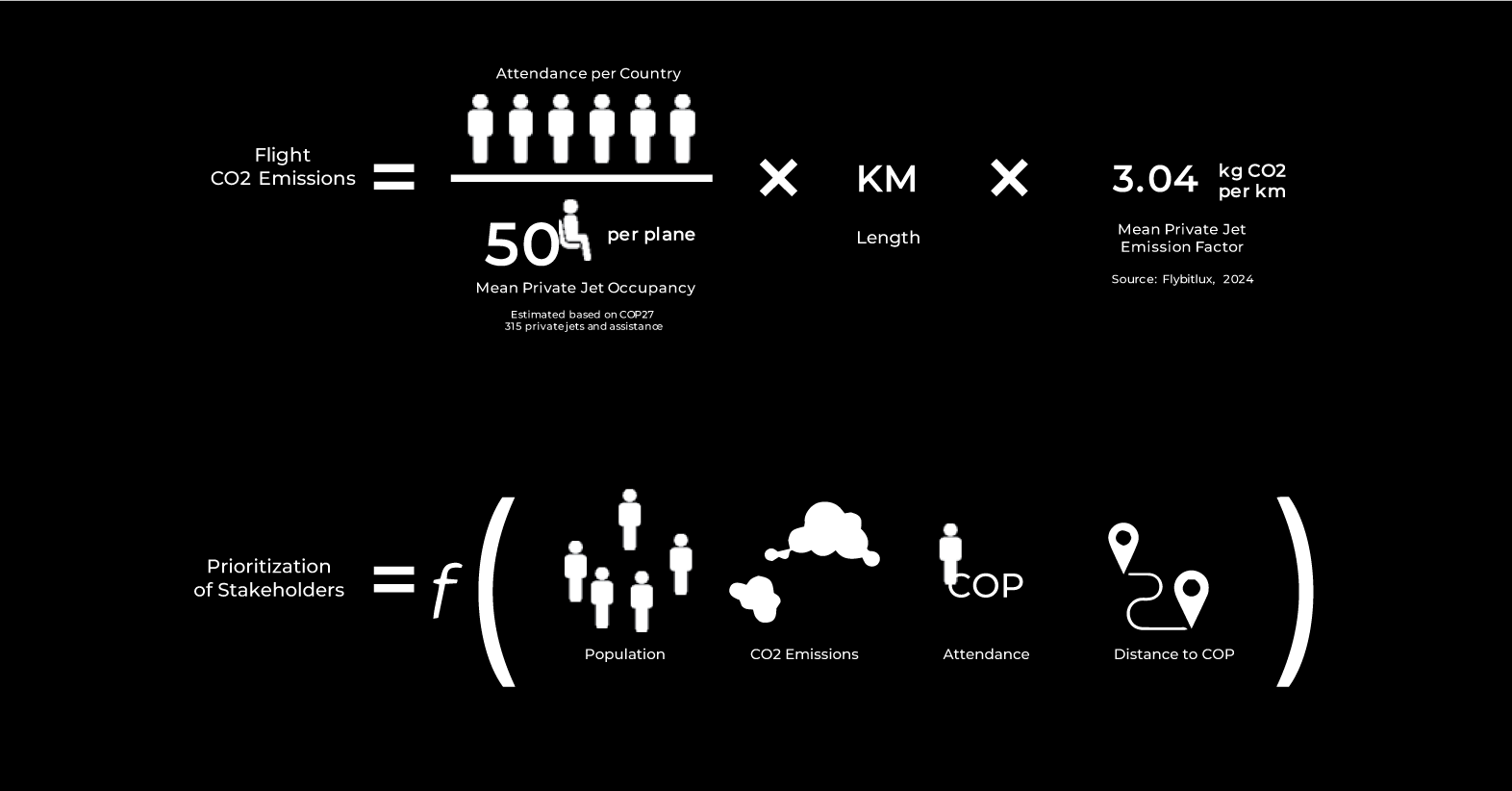
04. Global Scale
The trend for the past 6 COP events shows that countries such as China, U.S.A., India, Russia and Qatar have always been within the Top 5 of most critical stakeholders participating in COP events, being influencial parties in the emission potential of COP events.
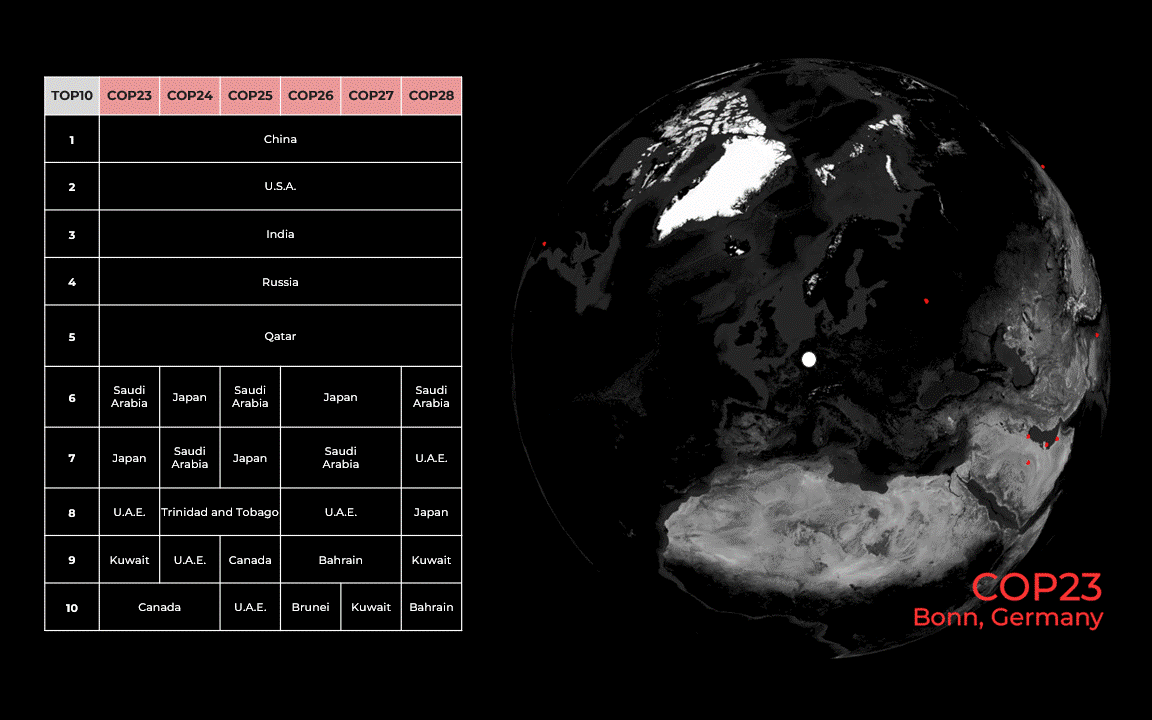
05. Open Source Methodology
By developing a structured methodology, it is possible to develop a reproducible algorithmic process based exclusively on open data. The need to create awareness motivates to share the process of data mining and transformation on an open platform such as a GitHub repository. This same motivation for the global impact of the COP is explored at the local scale of the host cities below.

06. Local Scale
Data from Wego indicated a significant 29% increase in flight and hotel bookings for Dubai from November 2022 to November 2023, reflecting heightened demand likely due to the COP28 event. With one metro line, that is in overcapacity, going from the airport to the site of the COP event, we can assume that most gusts will be taking motorized vehicles to reach the event. With a simple calculation to put into perspective how much extra carbon emissions are being produced by the mobilization of people for the event we can find that if 75% of the attendees did one trip from Burj Khalifa to the Site, that is the equivalent of 550 flights from New York to London.
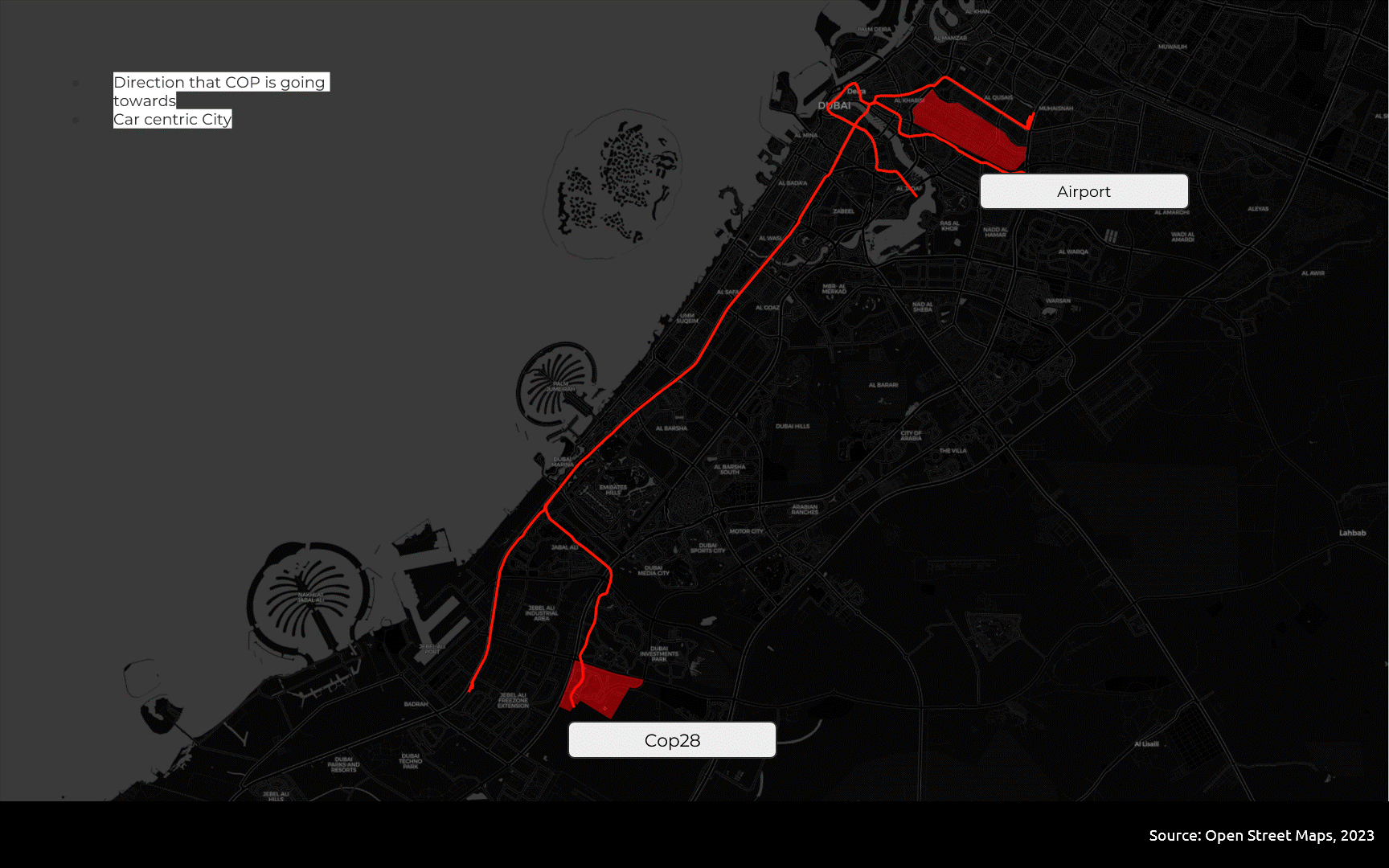
In order to prove that the impact of the event is significantly affecting the atmosphere and the people living in the host city are being affect. We can look at the NO2 tropospheric concentration that is provided by Google Earth Engine. We can see that the difference in concentration between a few weeks prior to the event and during the event are dramatically different. If we look at COP24 and COP25, we can see that the COP event has had a similar impact on both cities, proving the negative effects of the global event.
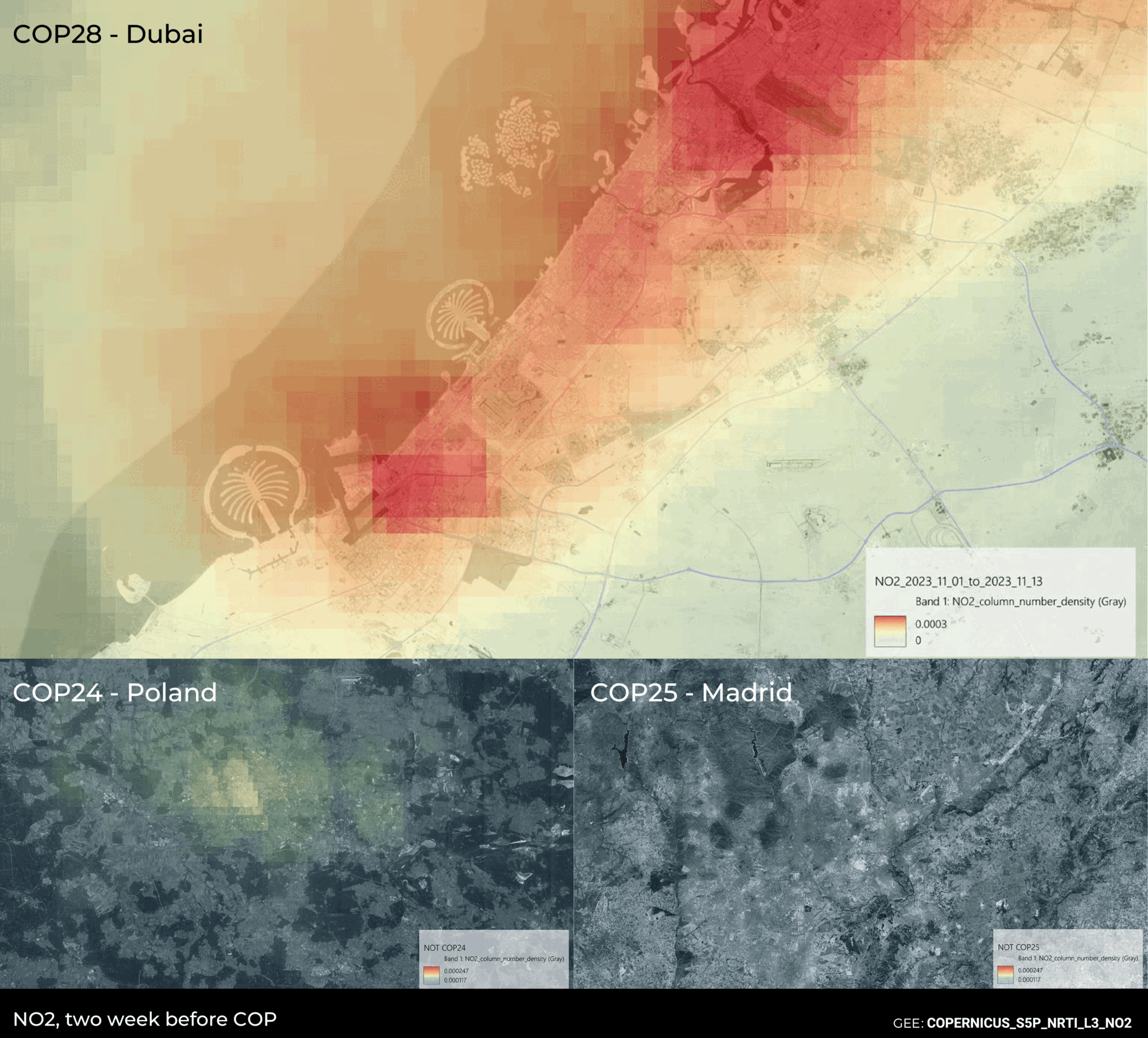
07. Future
The rise in COP events, particularly in fast-developing cities like Dubai, Baku and Belem has sparked concerns about greenwashing. These cities seize the opportunity to showcase themselves as environmentally friendly by hosting such significant global events. However, the increased carbon footprint from the event itself, including higher demands on transportation and accommodation, contradicts the core message of reducing emissions, highlighting a complex challenge in aligning the event’s environmental goals with the reality of its execution.

08. Awareness Tool
A tool has been developed as a means for raising awareness about the polluting impact of COP events in hsitory, making the problem tangible and in a visual and clear language that facilitates its understanding. The COP Tracker Tool, provides an interactive dashboard for visualizing the flight paths of the most critical countries for each of the previous COP events since COP23. Furthermore, it extends the methodology trained on historical data to especulate about the possible attendance, flight paths, mobility loads in the local scale, and polluting impact of the next two COPs to be hosted in Baku and Belem. The tool not only is expected to be a look into the past and possible negative externalities of the future, but also host opportunities for people to mitigate the impact of COPs by mapping the location of recycling spots, urban gardens, public transport supply, or other types of activities which COP attendees can be involved in to counter act the polluting effect of COP.
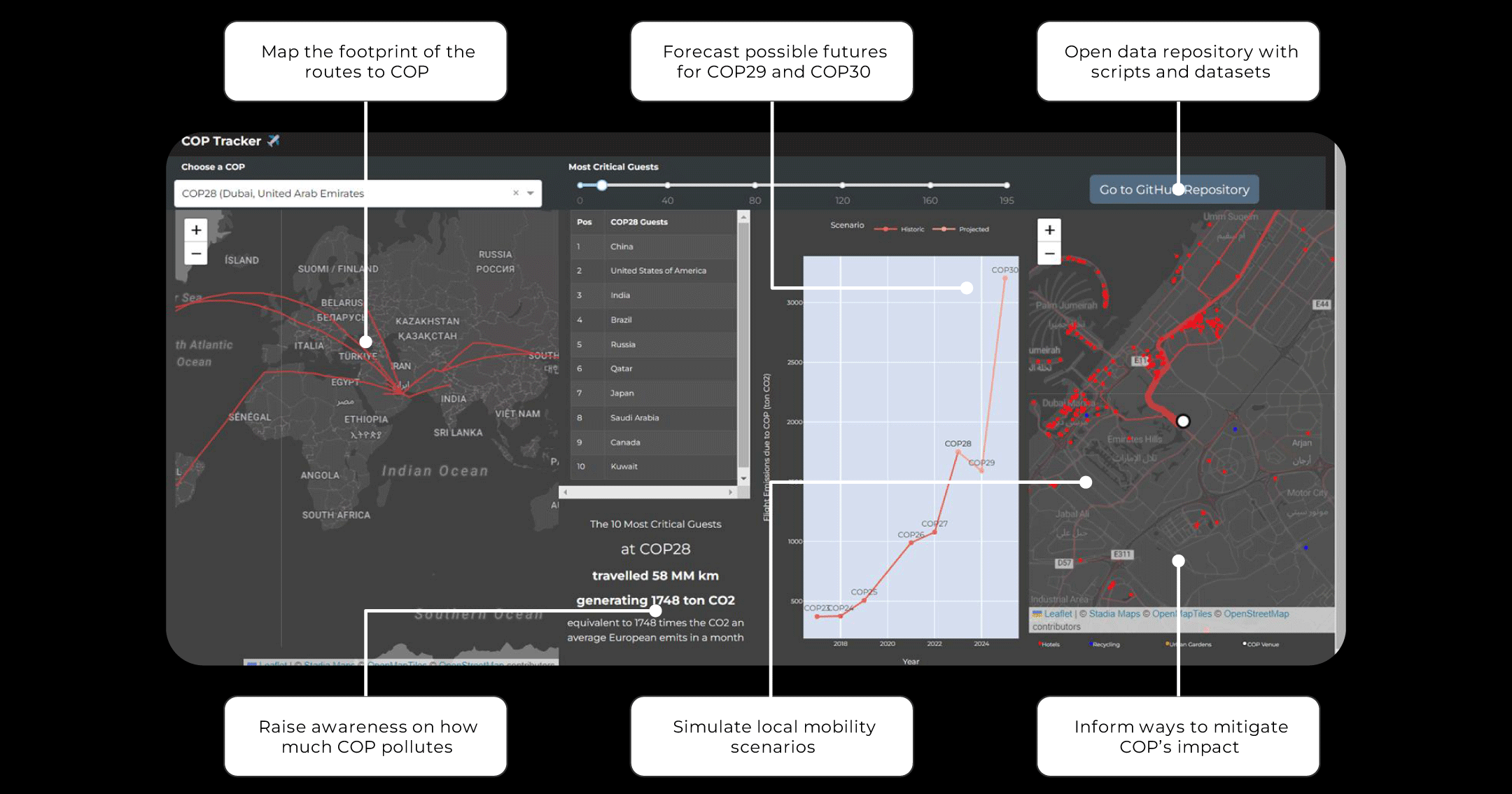
The developed framework also leads to especulate on how this methodology can be applied to trace the polluting effects of other global and big scale countries, such as Formula 1 or even Taylor Swift concerts.


